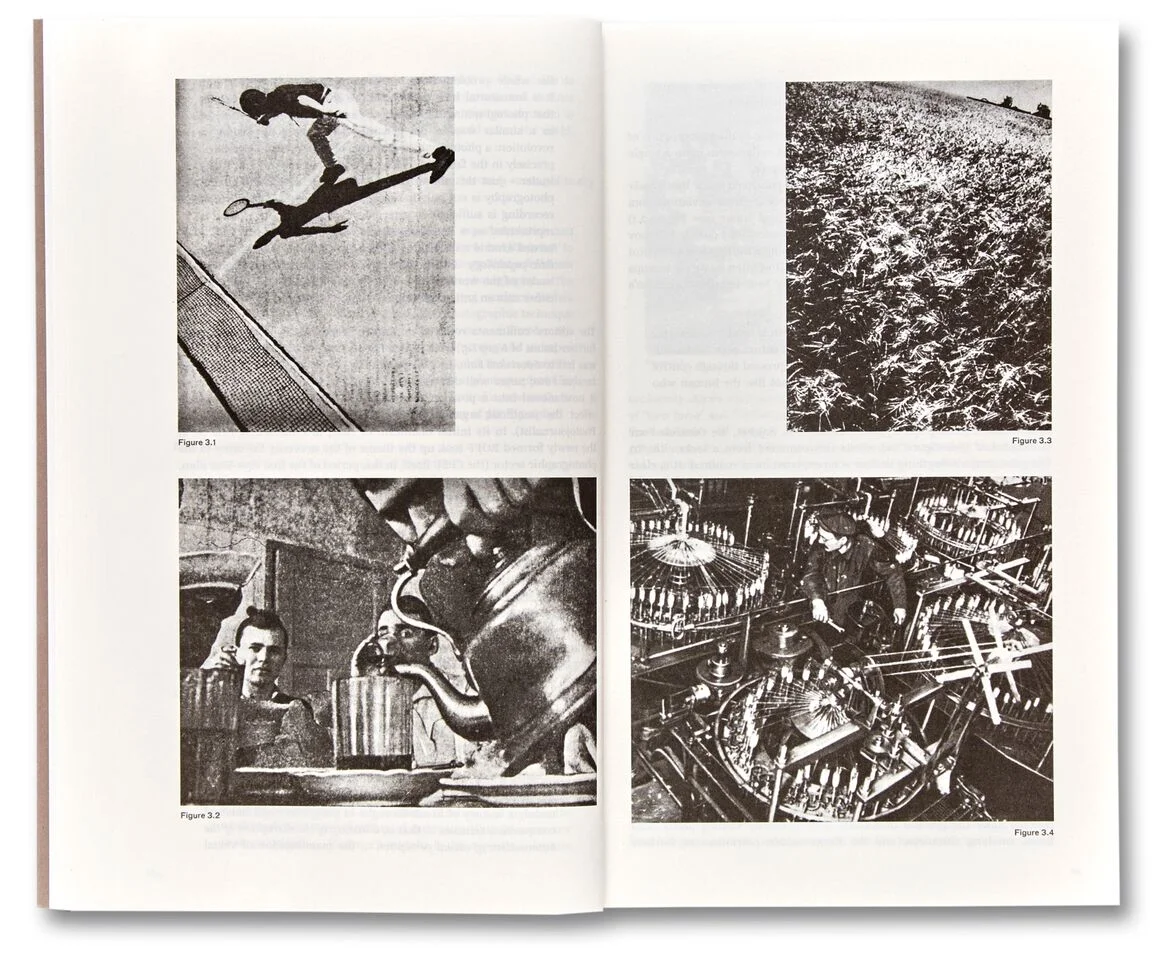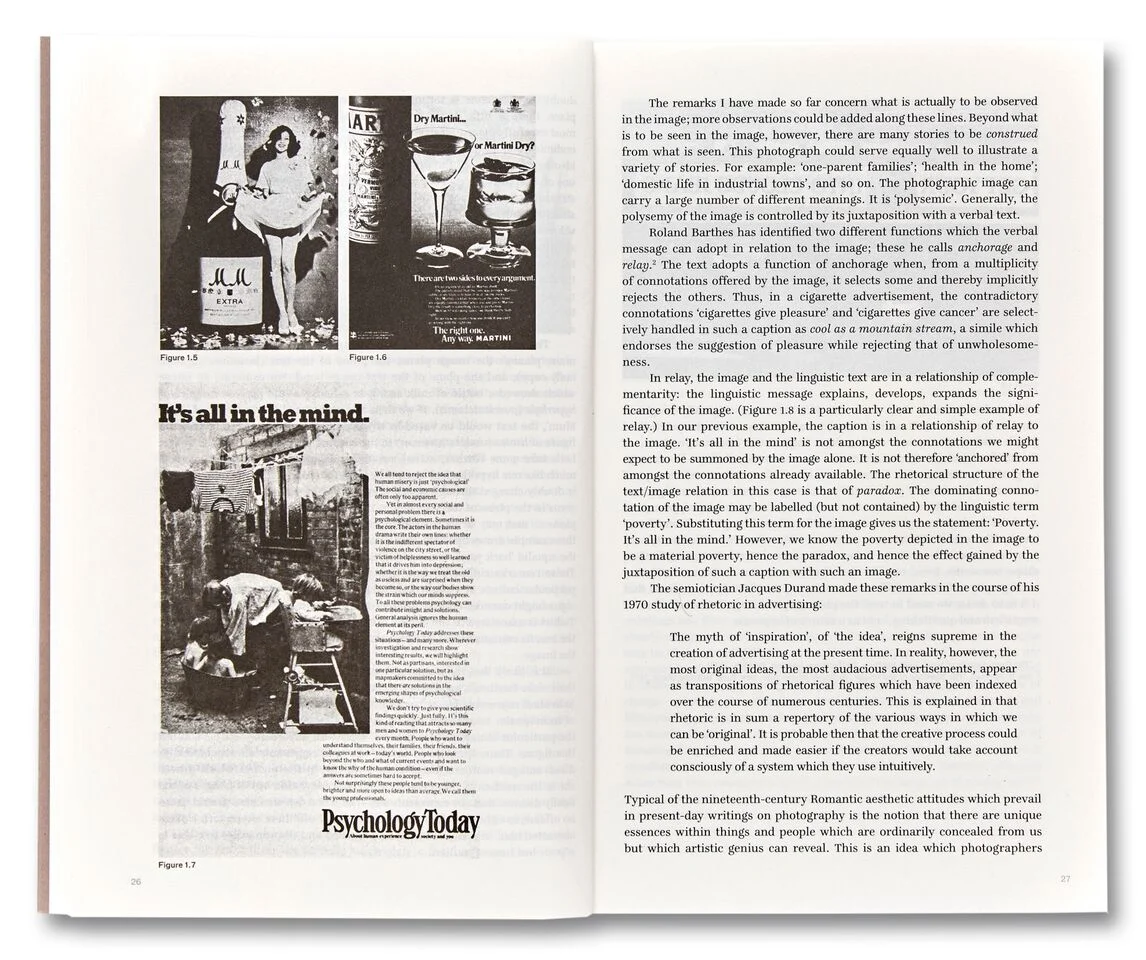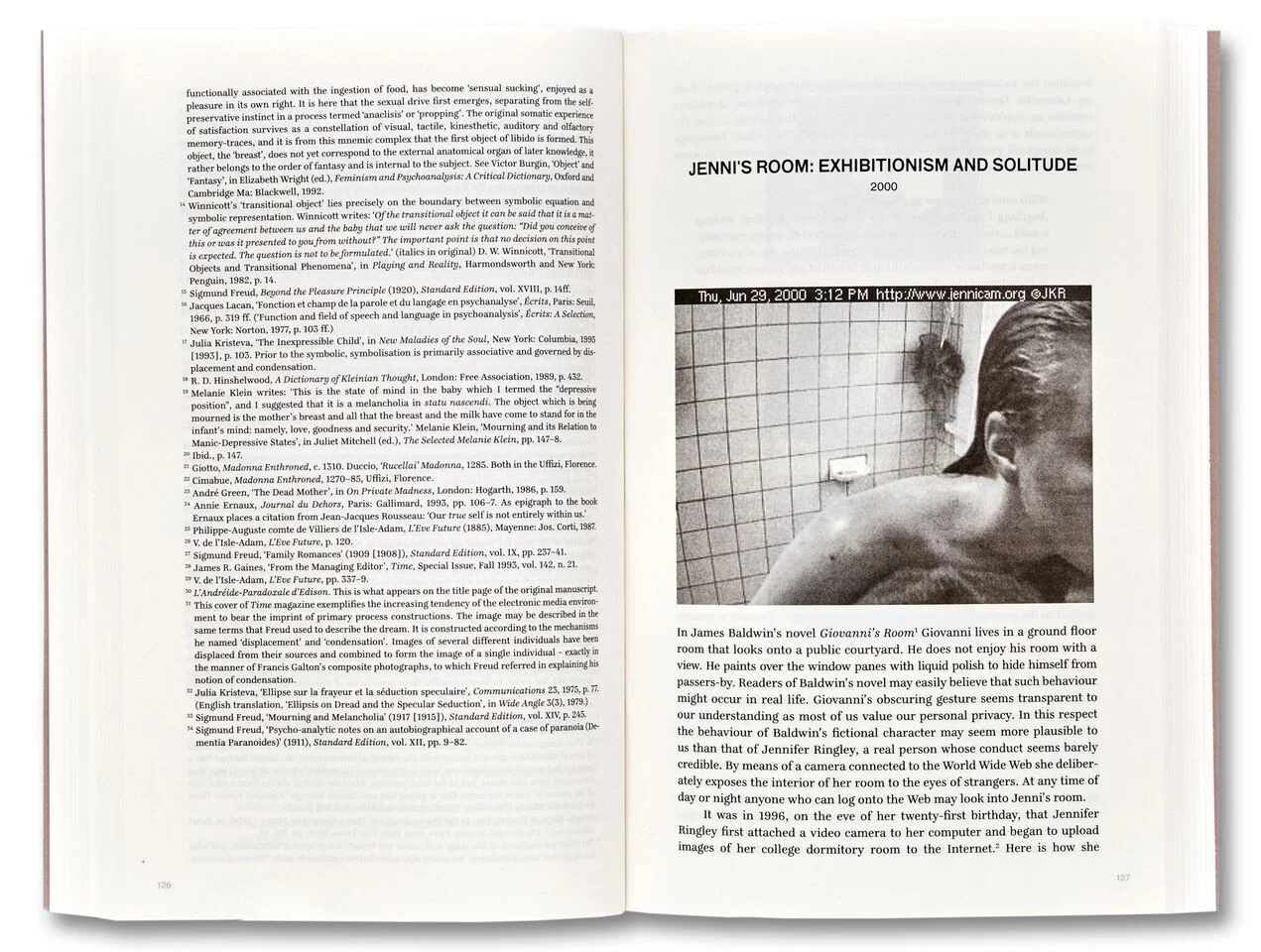Book Review: The Camera: Essence and Apparatus
Front Cover: CGI frame from Afterlife, Victor Burgin, The Camera: Essence and Apparatus (2018), courtesy of MACK.
by Larayb Abrar
In his book The Camera: Essence and Apparatus, artist and writer Victor Burgin brings together a collection of theoretical essays dating from 1975 to 2017 on the camera, photography and the evolution of image form and content. Rather than emphasizing the difference between analogue and digital images, he instead argues that there is continuity in Western visual representation from its quattrocento origins in manual drawing to its mechanization via photography and other virtual and algorithmic media. This compilation of about four decades of thought is Burgin’s attempt at tying the ‘traditional’ art world with that of the virtual image and explaining the political role of photographs in producing cultural beliefs and values.
Through his essays, he explores scenes of phantasy, images of perverse space, text in photography, representations of architecture and cities, and the role of institutions in promoting art as a commodity. Burgin argues that the world is not only represented through image, but also that looking at an image moves beyond an optical experience and instead becomes a psychological event. Images create contested spaces, project fantasy and manifest emotions. For Burgin, whether on pages, walls, in galleries, online or in fragments, images affect us, our sense of self, and the world around us.
Fig. 3.1, 3.2, 3.3,3.4, pp. 42-43
Victor Burgin, The Camera: Essence and Apparatus (2018), courtesy of MACK.
The first few essays focus exclusively on traditional still photography, through which Burgin builds the case of photography as a political act. He explains that the job of the photographer is paradoxical in the sense that the camera is meant to record “appearance and appearance alone,” and yet the photographer must use this image to penetrate or expose a part of society that is hidden to the ‘naked eye.’ While photography is visual and seemingly objective, our final analysis of said photo is not. Our final analysis depends on cultural and temporal knowledge and it is not understood equally by everyone everywhere.
Fig. 1.5, 1.6, 1.7, pp. 26-27
Victor Burgin, The Camera: Essence and Apparatus (2018), courtesy of MACK.
In the middle sections Burgin focuses on unconventional photography methods such as film and other moving images. A particular case study he discusses is that of a college student named Jennifer Ringley who set up a web camera in her dorm room and had it randomly take photos of her everyday activities which were then automatically uploaded to a website for public viewing. While Jennifer was criticized initially as being an exhibitionist, Burgin argues her work allows for audiences to gain a greater understanding of subjectivity. Moreover, he expands the significance of the camera to include the webcam as well as the video camera, championing them as continuations of the photographic tradition.
"Thu, Jun 29, 2000 3:12 PM", jennicam.org, pp. 126-127
Victor Burgin, The Camera: Essence and Apparatus (2018), courtesy of MACK.
In his final essay, Burgin discusses commodity and apparatus. Somewhat counter-intuitive, his definition of “apparatus” is not any technical equipment, rather we are prompted to think of “apparatus” as institutions such as museums, schools or the government. He argues that art is commodified because there is an ideological institution that serves it. For Burgin, the apparatus is the narrative that gives something legitimacy. As he concludes, we are moved to think about visual representation in virtual form and to place ourselves in relation to media such as advertisements, art works, photography and film and in turn to think about the apparatuses that form us and how we form them.











